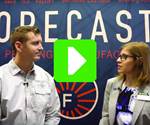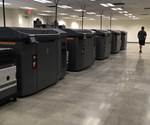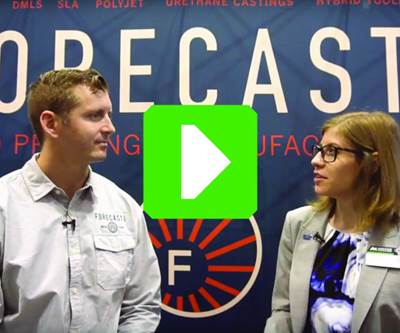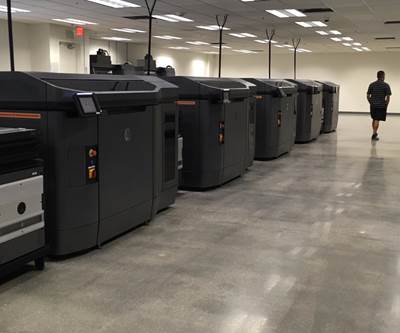GKN's Acquisition of Forecast 3D Points the Way to AM's Future
The vision? Parts produced on demand where they are needed, from the material that makes sense.

Additive Manufacturing caught up with Corey and Donovan Weber, Forecast 3D, and Guido Degen, GKN, at Formnext 2019 in Frankfurt, Germany, to learn more about what GKN’s acquisition of Forecast 3D will mean.
When GKN announced it had acquired Forecast 3D, the news came as a surprise to many in the industry. The former is a British multinational company with expertise in powdered metals and a focus on automotive and aerospace components that together have led it toward production with metal additive manufacturing (AM). The latter is a younger, California manufacturer that has progressed from prototyping into plastic parts production with 3D printing. In many regards, the companies couldn't be more different.
But in other ways, that is very much the point. Additive Manufacturing caught up with Guido Degen of GKN, and Corey and Donovan Weber of Forecast 3D at Formnext 2019 to talk about the move and what it will mean for both companies going forward. Both firms are part of HP's Digital Manufacturing Network, which is what threw them together in the first place, but the move is about much more than one builder's technology.

Corey and Donovan Weber, the two brothers who founded Forecast 3D, shown in 2017 at their 3D Manufacturing Facility in Carlsbad, California. Forecast 3D was an early adopter of HP’s Multi Jet Fusion, a technology that has helped grow the company into a significant producer of 3D printed plastic parts.
From GKN's perspective, Forecast 3D offers expertise in products and markets the British company doesn't currently reach. In AM, "Plastics is probably five years ahead of metal, and Forecast 3D has one of the largest installations of Multi Jet Fusion in the world," Degen says. With the acquisition GKN gains a wider process portfolio as well as greater customer access and knowledge of new markets. Adding plastics could be an important advantage, as the material increasingly finds more use cases in parts that have conventionally been made from metal.
Forecast 3D gains a similar benefit in reaching new customers and markets, as well as the opportunity to grow with the infrastructure GKN already has in place — including its engineering capacity, data processing capability and automation systems. "We're still in a batch mindset," Donovan Weber says. "We want to scale with their business systems, stabilize processes, reduce costs."
"There are so many opportunities out there, but we need more resources to go after them," Corey Weber adds. "The promise of AM is distributed manufacturing — it's local, it's on demand. And we can't do that with just one site in Carlsbad, California."
“The promise of AM is distributed manufacturing — it's local, it's on demand.”
A logical outcome of this acquisition, and one that all three interviewees expect, is that Forecast 3D equipment and personnel will be based in other GKN sites for on-demand plastics manufacturing. Process expertise will travel, and customers will benefit from the chance to explore metal or polymer in applications without needing to settle for the incumbent material type.
"This will be a cross-process relationship," Degen explains, "bringing plastics to other GKN sites, and metal to Forecast 3D."
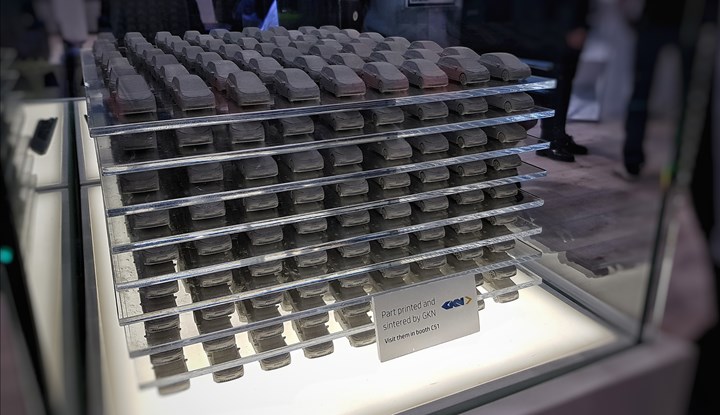
Both companies have been early adopters of HP 3D printing technology—Multi Jet Fusion (MJF) for polymers in the case of Forecast 3D, and Metal Jet for metals at GKN. These models were built on the latter platform to commemorate Volkswagen’s launch of the ID.3 generation of electric vehicles.
Read Next
Video: 3D Printing Is a Complement and Competitor to Injection Molding
Ken Burns of Forecast 3D, an early adopter of HP Multi Jet Fusion, sees 3D printing as both a complement and a competitor to injection molding. He shares why in this interview.
Read More3D Printing for Production Takes Hold at Forecast 3D
The company is seeing real benefits and potential in HP’s Multi Jet Fusion (MJF) 3D printing technology for manufacturing plastic parts in high volumes.
Read More
.jpg;width=70;height=70;mode=crop)
